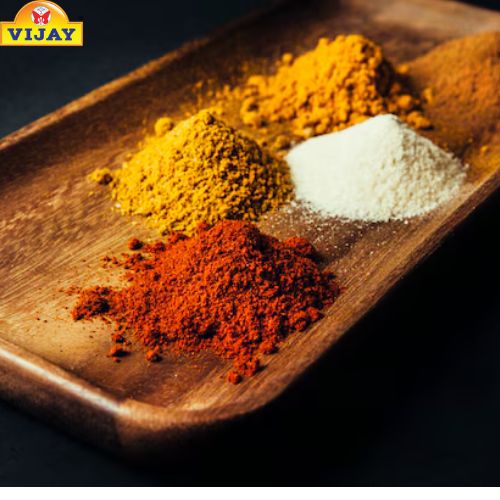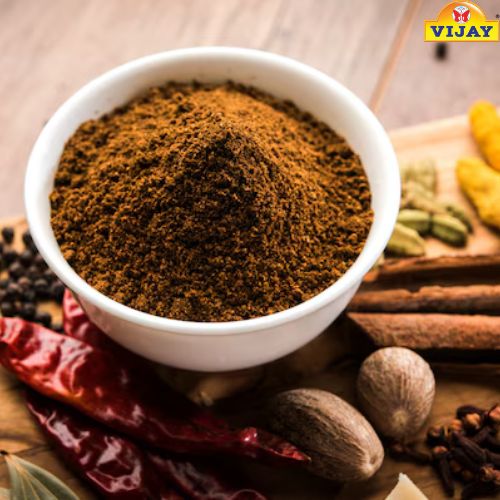Spices are the backbone of flavorful cooking, especially in Indian cuisine. However, one common question among home cooks and food enthusiasts is the difference between garam masala vs. curry powder. While both spice blends add warmth and complexity to dishes, they have distinct compositions and uses.
Garam masala powder is a bold, aromatic blend of warming spices, often added at the end of cooking to enhance depth and fragrance. On the other hand,curry powder is a milder, turmeric-based mix used as a foundational seasoning in many dishes. Both have unique regional variations, making them versatile yet different in their applications.
This guide explores the key differences between these two popular spice blends, helping you determine which one best suits your recipes.
Spices play a crucial role in defining the taste of a dish, and both curry powder and garam masala powder bring unique flavors to the table. While they may seem interchangeable, their origins, ingredients and uses set them apart.

Curry powder is a British adaptation of traditional Indian spice blends, created to mimic the flavors of Indian cuisine in Western kitchens. It typically features a mild, earthy profile with a slightly sweet undertone.
Common ingredients:
Turmeric, cumin, coriander, fenugreek and sometimes ginger or mustard seeds.
Flavor:
Milder compared to garam masala, with an earthy and slightly sweet taste.
Best for:
Western-style curries, soups, stews, marinades and even roasted vegetables.

Garam masala powder is a traditional Indian spice blend known for its bold aroma and warming spices. Unlike curry powder, it doesn’t contain turmeric and is typically added at the end of cooking to enhance flavor.
While both spice blends elevate a dish, their distinct flavors and uses make them suitable for different types of cuisine. Understanding these differences can help you choose the right one for your cooking.
While both garam masala powder and curry powder are spice blends used to add depth and warmth to dishes, they are quite different in terms of origin, ingredients, flavor profile and usage. Knowing these distinctions will help you make the right choice for your recipes.
The primary difference between garam masala vs. curry powder lies in their origins.
Ingredients & Composition
Both spice blends contain a variety of spices, but their composition differs significantly.
The difference in ingredients also affects the overall taste of these spice blends.
Curry Powder: Known for its mild, earthy and slightly sweet flavor. The turmeric base gives it a subtle bitterness, but it is generally well-balanced.
Garam Masala Powder: More warm, bold and intensely aromatic. It adds depth to dishes, often with a slightly spicy kick depending on the specific blend.
Both curry powder and garam masala have distinct roles in cooking, influencing when they should be added to a dish.
Curry Powder: Typically used at the beginning of cooking, allowing its flavors to develop and blend with other ingredients. It is commonly used in stews, soups, marinades and even as a seasoning for vegetables and meats.
Garam Masala Powder: More often sprinkled at the end of cooking to enhance the aroma and provide a finishing touch to curries, biryanis and lentil dishes.
While curry powder remains fairly standardized due to its Western origins, garam masala has multiple regional variations.
Both garam masala vs. curry powder bring unique flavors to the table. If you want a mild, turmeric-forward spice mix that blends well in Western-style dishes, curry powder is the right choice. If you’re looking for a bolder, more aromatic finish to your dish, powder garam masala will add the depth and warmth needed for authentic Indian flavors.
Both curry powder and garam masala powder enhance dishes in unique ways. Knowing when to use each will help you achieve the perfect flavor.
Use curry powder for a milder, turmeric-forward taste in global dishes. Opt for garam masala powder to bring warmth and complexity to authentic Indian cuisine.
While curry powder and garam masala powder share some spices, they are not direct substitutes due to their distinct flavors and uses.
Using Curry Powder Instead of Garam Masala:Not ideal, as curry powder has a milder, turmeric-based taste. If needed, add a pinch of black pepper, cinnamon and cloves to bring warmth closer to garam masala.
Using Garam Masala Instead of Curry Powder is possible, but it lacks turmeric’s signature earthiness. To mimic curry powder, mix garam masala with a bit of turmeric and cumin.
For authentic flavors, it’s best to use the right spice blend for each dish. However, with slight modifications, they can be used interchangeably in a pinch.
The choice between curry powder and garam masala powder depends on the dish you’re preparing and the flavor profile you want to achieve.
Use Curry Powder if you prefer a mild, earthy flavor with turmeric’s golden color. It’s ideal for Western-style curries, soups, marinades and roasted vegetables.
Use Garam Masala Powder for a bold, aromatic touch, especially in Indian curries, biryanis, lentil dishes and grilled meats.
For the best results, curry powder works well during cooking, while garam masala is typically added at the end to enhance aroma and depth. Choose wisely to elevate your dish!
Not ideal, as curry powder is milder and turmeric-based. Add warm spices like cinnamon and cloves for a closer match.
It has a unique blend with more emphasis on cardamom, cinnamon and bay leaves, giving it a distinct aroma.
Yes, it’s a flavorful garam masala blend with regional spices for authentic taste.
Usually, in the end, it preserves its bold aroma and enhances flavors.
Yes, for a balanced taste—curry powder adds depth, while garam masala boosts warmth and aroma.